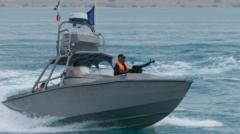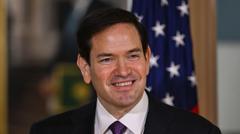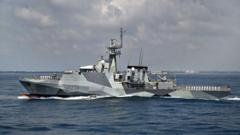The article discusses the rising fears in South Korea over China's installation of large steel structures in the Yellow Sea, officially stated as fish farms. South Korea’s National Assembly recently condemned these installations as potential threats to maritime safety. This situation complicates diplomatic relations for President Lee Jae Myung as he attempts to balance ties with Beijing and strengthen alliances with Washington.
China's Fish Farms or Military Installations? Concerns Rise in South Korea

China's Fish Farms or Military Installations? Concerns Rise in South Korea
China's recent maritime structures in the Yellow Sea prompt fears of military expansion among South Koreans.
In recent years, China has installed significant structures in the Yellow Sea, including a decommissioned oil drilling rig and large octagonal cages, claiming they serve as fish farms. However, South Korean officials express concerns that these could actually bolster China's military standing in the region. On Monday, the National Assembly of South Korea adopted a resolution condemning the installations, citing them as "a threat to maritime safety," garnering bipartisan support for the cause.
A report from the Center for Strategic and International Studies further fueled these concerns, although it concluded that the structures are likely intended for aquaculture. Despite this, it highlighted the possibility of dual-use for military applications – a notion rooted in China's past behavior in the South China Sea, where civilian projects ostensibly morphed into military outposts over time.
The parallels drawn between the Yellow Sea structures and previous Chinese actions in contested waters have heightened tensions. South Koreans worry that these installations might not merely be aimed at aquatic farming; they could pose threats to regional stability as they might collect data valuable for military endeavors.
This challenge awaits newly inaugurated President Lee Jae Myung, who is pursuing both improved relations with China and a stronger partnership with the United States. He plans to address this ongoing concern during a potential meeting with Chinese leader Xi Jinping at the Asia-Pacific Economic Cooperation summit in Gyeongju, South Korea, later this November. The interplay between his diplomatic goals and the reality of China's military ambitions in the Yellow Sea will be closely scrutinized as tensions continue to rise.
A report from the Center for Strategic and International Studies further fueled these concerns, although it concluded that the structures are likely intended for aquaculture. Despite this, it highlighted the possibility of dual-use for military applications – a notion rooted in China's past behavior in the South China Sea, where civilian projects ostensibly morphed into military outposts over time.
The parallels drawn between the Yellow Sea structures and previous Chinese actions in contested waters have heightened tensions. South Koreans worry that these installations might not merely be aimed at aquatic farming; they could pose threats to regional stability as they might collect data valuable for military endeavors.
This challenge awaits newly inaugurated President Lee Jae Myung, who is pursuing both improved relations with China and a stronger partnership with the United States. He plans to address this ongoing concern during a potential meeting with Chinese leader Xi Jinping at the Asia-Pacific Economic Cooperation summit in Gyeongju, South Korea, later this November. The interplay between his diplomatic goals and the reality of China's military ambitions in the Yellow Sea will be closely scrutinized as tensions continue to rise.





















